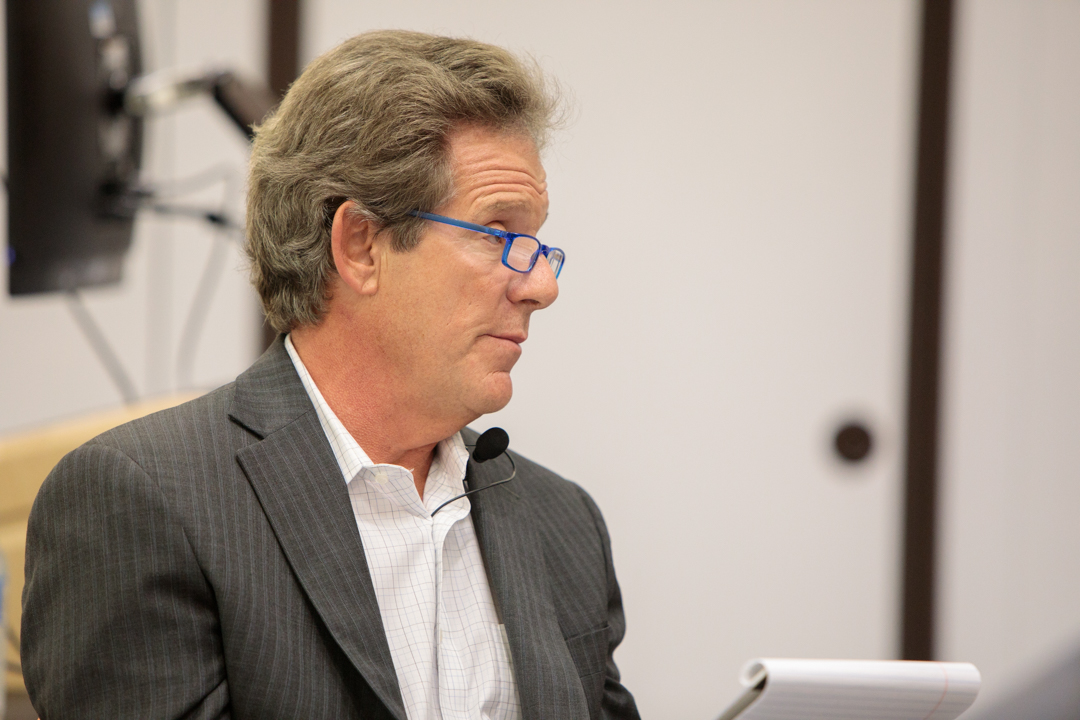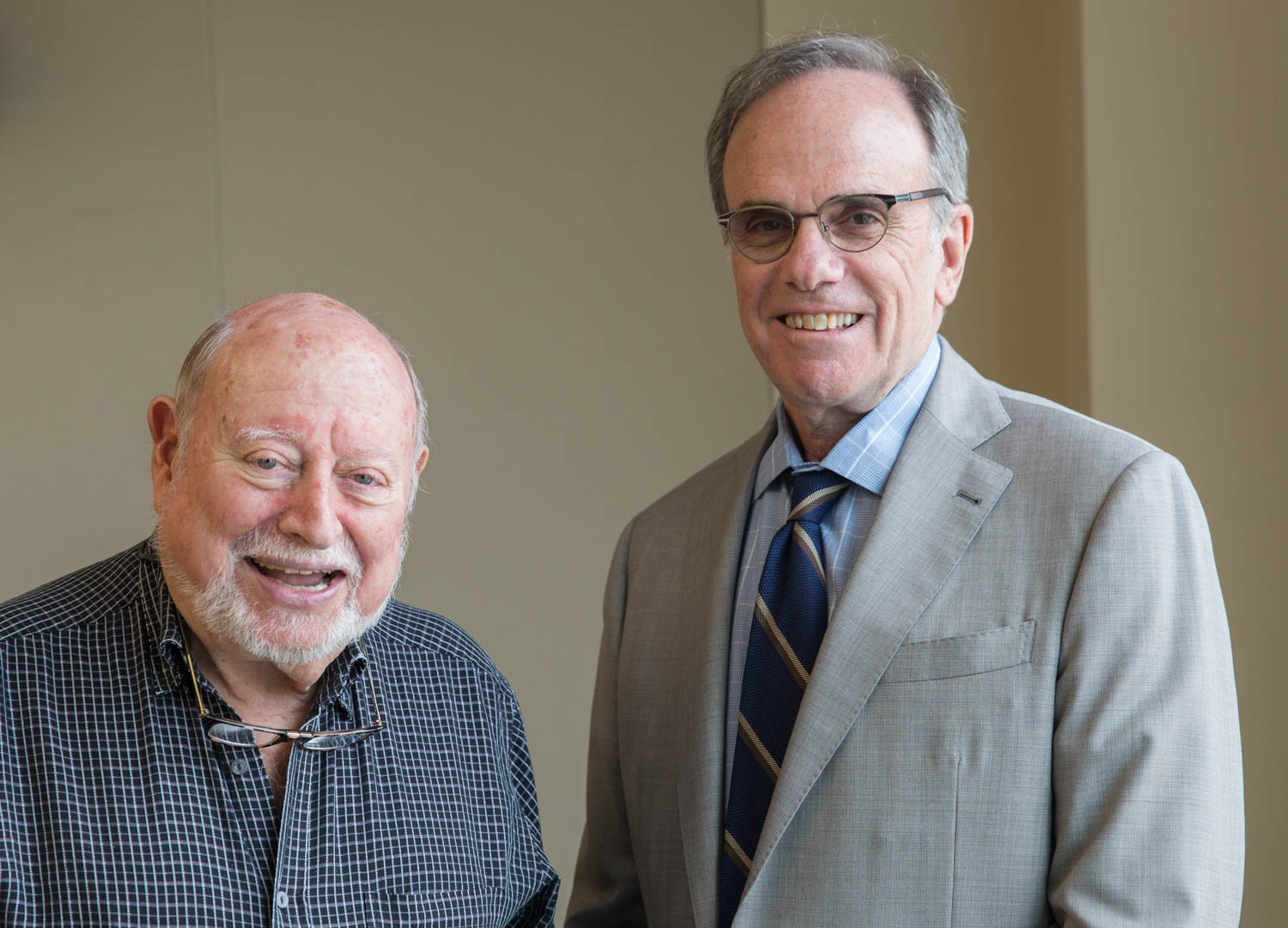By Ruth Steinhardt
Although Americans are the second-most generous charitable givers among nations, their high level of individual and corporate giving suggest a landscape in which the public interest is increasingly influenced by private individuals, philanthropy expert Chip Edelsberg said Wednesday.
“Is philanthropy increasingly becoming…a rival power to the state, something that disrupts the exercise of government? Or is it an alternative way of pursuing the public interest?” Dr. Edelsberg asked. “I think it’s both right now.”
Dr. Edelsberg, founding director of the Jim Joseph Foundation and a former public school superintendent, spoke with Graduate School of Education and Human Development Dean Michael Feuer as part of the school’s “Conversations That Matter” series. It was the climactic event of a three-day master class on the current state of American philanthropy.
American charitable giving reached $390 billion in 2016, and Dr. Edelsberg said the vast majority of those donations came from individuals and corporations rather than charitable foundations.
“You would think that would be a good thing, but not everyone sees it that way,” he said.
The “enormous concentration of capital” in a small minority of Americans has led to heretofore unimaginable philanthropic possibilities. Microsoft co-founder Paul Allen pledged $100 million to fight the Ebola virus in 2014; a single private donor gave sufficiently to keep a Michigan public school from closing in May; Chancellor Bennett, alias Chance the Rapper, famously donated $1 million to the Chicago public school system in August.
“There’s this contradiction in capitalism where philanthropists step in to try to address and remediate some of the very problems of inequality their success has, arguably, created,” Dr. Edelsberg said.
Dr. Edelsberg said the motives of individual philanthropists vary. Tax advantages incentivize some, while others are driven by the imperatives of their faith. Still others undergo a “life-changing event” that drives them to give, he said, citing Wendy Schmidt, whose scuba-diving trip drove her to donate millions to marine science, and an anonymous man whose family member’s diagnosis made him invest heavily in research combating Hodgkin’s disease.
“There may be significant tax advantages at that level of giving, but it’s not why those people give,” he said.
But whether directly motivated by tax benefits or not, high-level donors almost always receive them, Dr. Edelsberg said. Money that would otherwise go to the federal government instead returns to those high level donors via tax breaks—so that philanthropists are essentially using public money to fund the causes they believe in. And few, if any, private philanthropists are held accountable for or required to be transparent about the way they spend their money.
Dr. Feuer said there is growing “anxiety about the extent to which philanthropists who have accumulated great gobs of wealth are able to fund activities and be influential with a lot of leeway.”
That is especially relevant as the federal government signals it will decrease spending on scientific research, Dr. Edelsberg said. However generous “megaphilanthropists” may be, he said, they cannot spend as much as the federal government.
The federal shortfall “is not going to get better, it’s going to get worse,” Dr. Edelsberg said. “And [individual] philanthropy is not going to replace it.”
Still, Dr. Edelsberg said he is hopeful for the state of public giving, mostly because he sees an increase in corporate philanthropic cultures and in new companies founded with an emphasis on social entrepreneurship. He noted the number of major companies donating to hurricane relief in Puerto Rico.
“I’m very encouraged by the Warby Parkers of the world,” Dr. Edelsberg said, referring to the eyeglass manufacturer that donates the price of a pair of glasses to nonprofit partners for every purchase. “There are many, many companies that are social-purpose businesses now, that are founded fundamentally on a sharing of profit and enhancement of civic life.”



